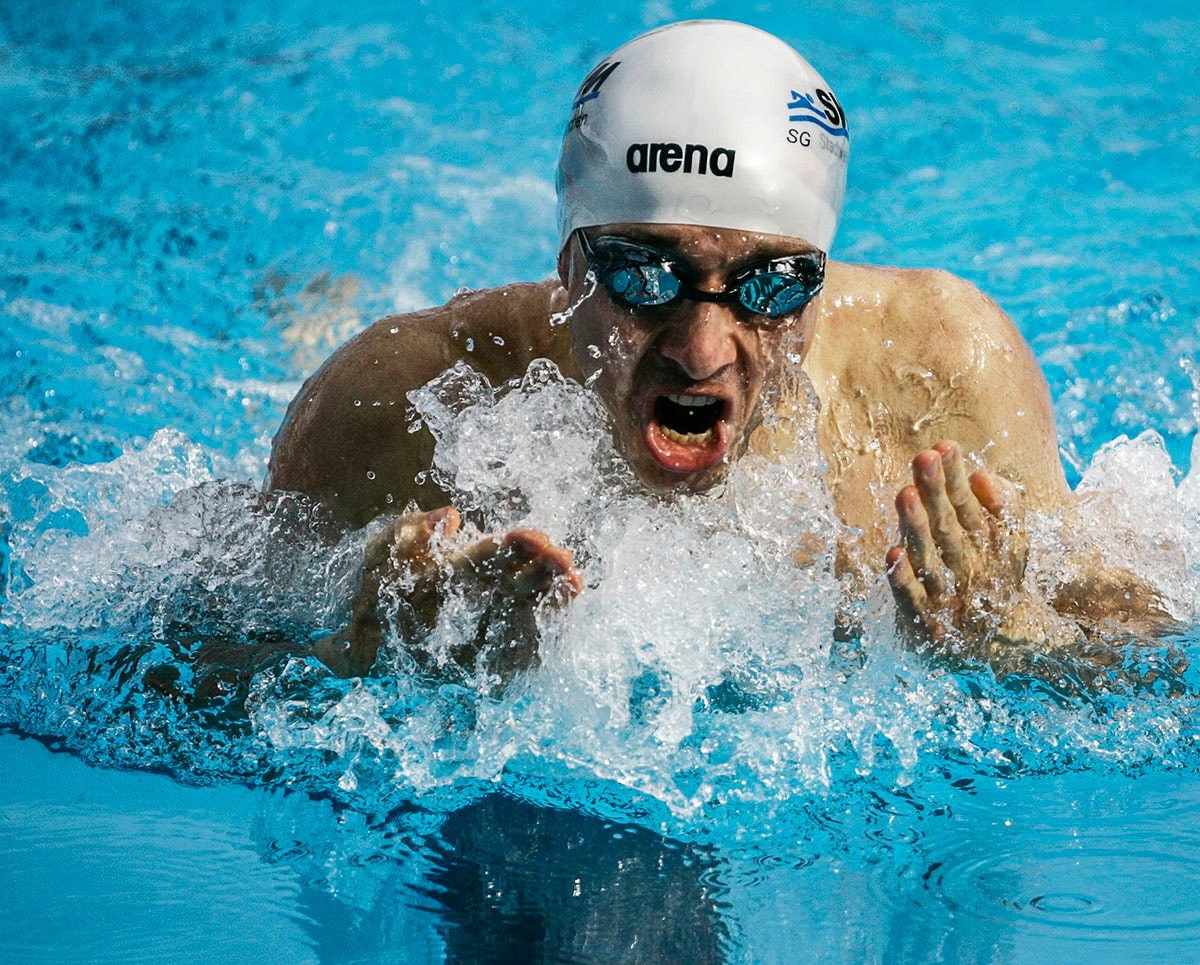Sports Photography - An Introduction: The Lens

This is the first tutorial, and it’s fitting that it’s on the type of photography I enjoy the most: action and sports photography. To start, we should discuss the obvious: the gear that you need to have. Since you generally can’t get too close to a football player in the middle of a game, you’re going to need a pretty long lens to be able to get in close and grab the action. How long, you ask? That depends on what sport you’re shooting.
For most sports, a zoom lens that covers around 70mm on the short end and between 200-300mm on the long end (35mm equivalent, for those of you using crop-sensor cameras) should do the job quite nicely to start out. 200mm is a little limiting for field sports like soccer, but if you’re patient, the action will come to you at some point (assuming you’re on the sidelines). For indoor sports such as basketball, you actually don’t want a very long lens because you can get pretty close to the action. My lens of choice for basketball is actually an 85mm prime lens.
Consumer Lenses
Most manufacturers make a variety of zoom lenses of different levels of quality that have the range we want for sports photography. The consumer-grade lenses, such as a 70-300mm, have the reach we want and are also quite light and compact for their range. This makes them easy to carry around. The big drawback to these lenses isn’t the quality of the image they produce, as these days even consumer-grade lenses can be quite good. No, the problems are that they tend to have slower autofocus motors and they don’t have very bright apertures.
First, we’ll discuss autofocus. Your camera needs to be able to track the subjects as they’re running around, but the focus motor is almost always in the lens.The motor in our 70-300mm f/4-5.6 lens is perfectly good for portraits and slower movement, but if our soccer players are adult humans running at full speed then it will have trouble keeping up. If we’re shooting our 8-year-old nephew, on the other hand, focus speed won’t be as much of an issue.
The other drawback to consumer-grade lenses is the variable maximum aperture. Let’s stay with our example of a 70-300mm f/4-5.6. This lens’ maximum aperture opening (the amount of light that can come in through the lens) doesn’t stay the same. It changes as you zoom the lens in and out. This means that you actually lose light as you zoom in. Now, this may not be an issue if we have enough light. If we’re shooting outside at noon then there’s more than enough light to compensate for the shift in aperture size. If we’re shooting hockey in a dim arena then light is already at a premium. Our variable-aperture lens is making things even harder!
Professional Lenses
Professional zoom lenses, such as a 70-200mm f/4, offer several advantages for those who want to take sports photography to the next level. Yes, they’re much sharper than the consumer lenses, but that’s not what’s going to help us get better shots. Remember, the key here is to get the shot. The fact that a lens is sharper won’t help you get the shot, it’ll just look prettier when you do. What will help you get the shot are the faster autofocus motors in these lenses and the constant maximum apertures. The focus motor in a pro lens will be much faster, which will help you track the action much better.The other big advantage to a pro lens is the constant maximum aperture. If we go back to our 70-200mm f/4, we see that the maximum aperture is always going to be f/4. This means that we can zoom in and out all we want without losing any light! In questionable lighting situations, light = speed. If the lens isn’t very bright then we will have trouble keeping a fast-enough shutter speed in the camera to freeze the action. The fact that this lens’ aperture stays constant gives us some consistency so we have one less thing to think about. In addition, pro zoom lenses can come with an even brighter aperture: every manufacturer makes a 70-200mm f/2.8 lens!
Sounds great! What does it cost?
This is the ideal lens for sports photography, but it comes at a price. Even such a lens from a 3rd-party manufacturer like Sigma will cost you over $1000, and in Canon it can be over $2000! Compare this to the relatively modest $500, give or take, for a 70-300mm f/4-5.6. The advantages are worth the price in general, but are they worth it for what you’re doing? Maybe yes, maybe no.

Image Stabilization
There is one more thing to discuss on the subject of lenses: image stabilization. Many lenses these days (and some camera bodies) offer some type of image stabilization. An optical image stabilizer is a system of sensors inside the lens that can sense vibrations. They then shift parts of the lens around to counteract the effect of that movement on the image. In-body image stabilization is the same basic idea, only instead of shifting around lens elements, it shifts the sensor.
Stabilization is great in general with long lenses because the longer the lens, the harder it is to keep stable. Every little movement of your hands is magnified. The best way to deal with this is with a tripod or monopod, but this equipment isn’t always practical. A stabilizer allows you to hold the lens in your hands without worrying about your hands causing blurred images.
But for action…
For sports photography, image stabilization isn’t really very useful. Remember, the idea of stabilization is to compensate for the effect of your hands moving and causing blurred images. But if your shutter speed is so slow that even the slight movement of your hand causes blur, what do you think is going to happen to the hockey player skating at full speed? They will be blurred no matter what because the stabilizer in the lens can’t stop the player.
The only way to do that is with a fast shutter speed setting in your camera. If the shutter speed is fast enough to freeze the motion of a hockey player, then it’s more than fast enough to stop whatever motion is caused by your hands moving slightly. Image stabilization is a great technology to have in general, but you shouldn’t go out of your way to get a lens that has one for sports photography. It simply won’t matter.

